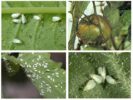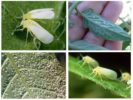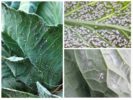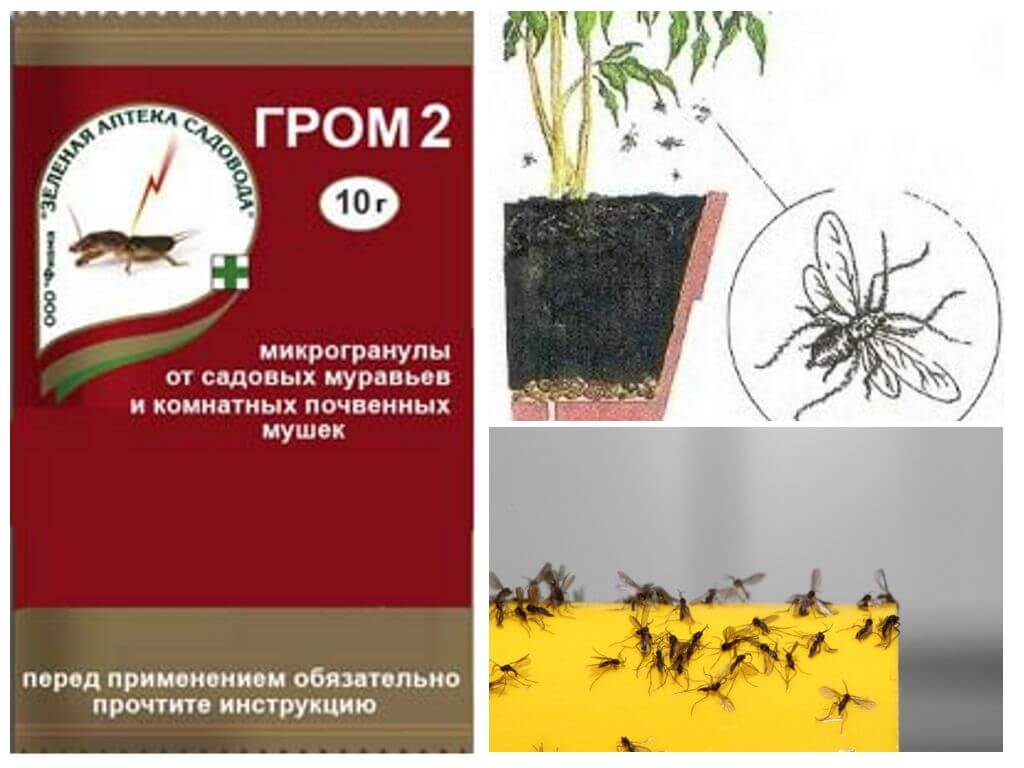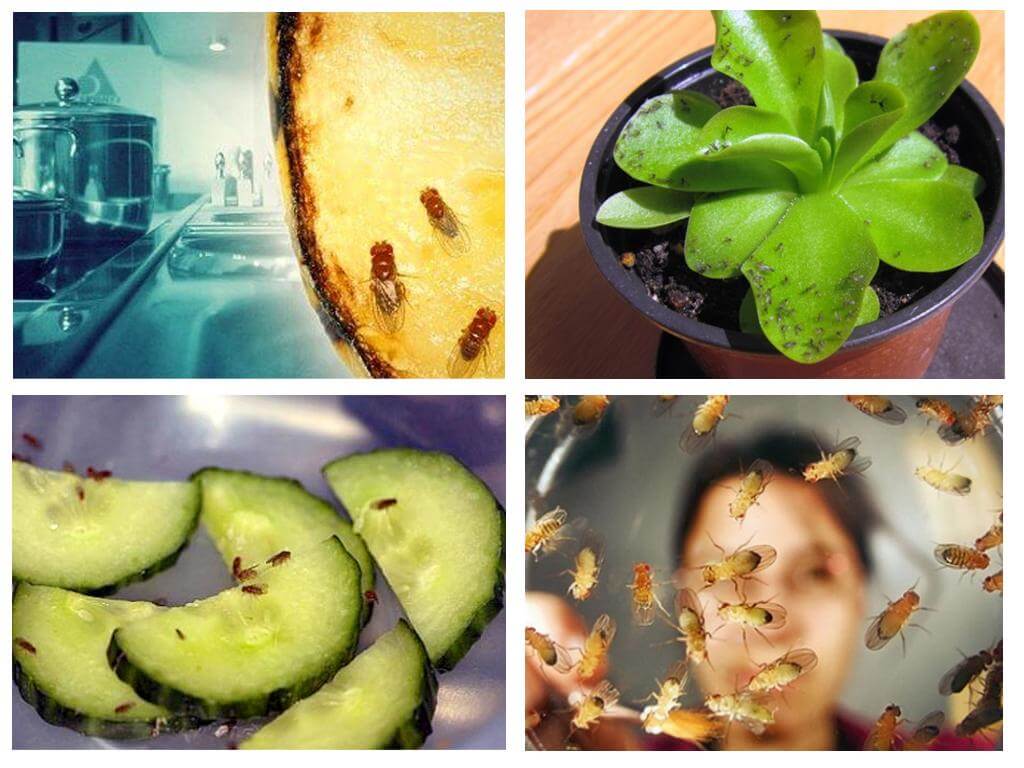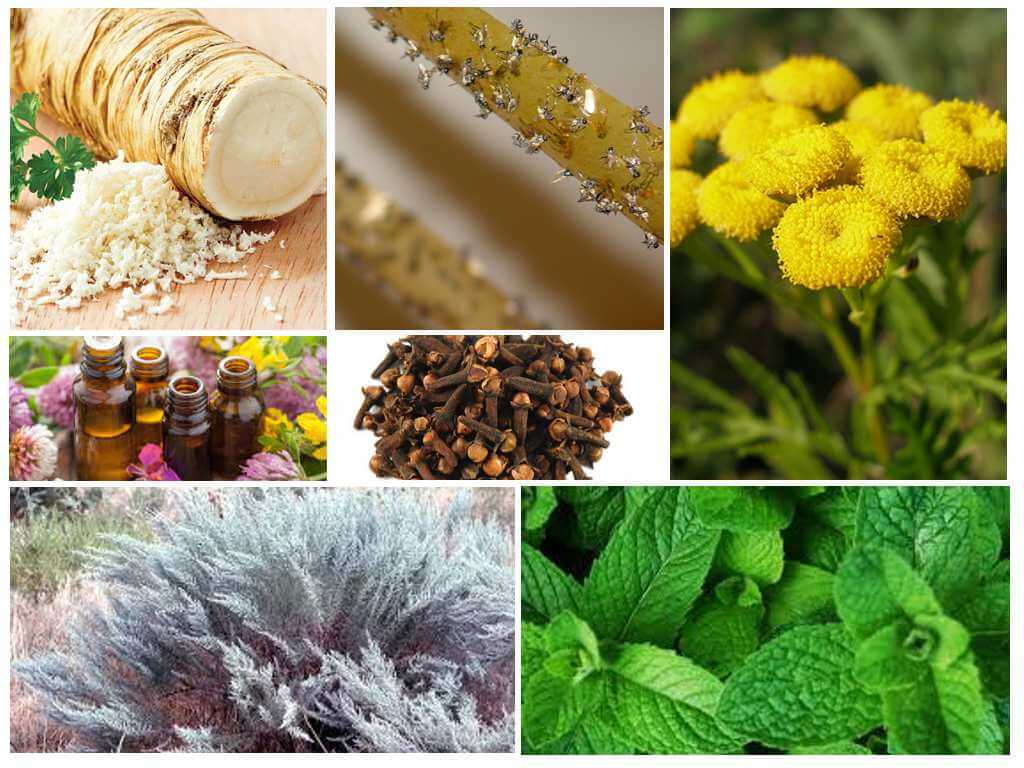- Whitefly on tomato
- Whitefly
- White-winged cabbage
- Whitefly drugs
To ensure that the family table is provided with high-quality vegetable products, summer residents install greenhouses on their plots. But quite often in these structures, comfortable for the growth of plants, pests, infections and diseases appear. Whitefly in the greenhouse is one of the most common and destructive misfortunes that can destroy almost the entire crop in the vine.
Signs of a whitefly in a greenhouse
Greenhouses, greenhouses and greenhouse constructions are an ideal place for whitefly propagation. The insect prefers a humid microclimate with a high temperature, therefore it feels comfortable, rapidly multiplies precisely in closed ground. The pest is carried mainly with plant seedlings. Therefore, timely notice of the presence of whiteflies in the greenhouse is a matter of honor for every landowner.
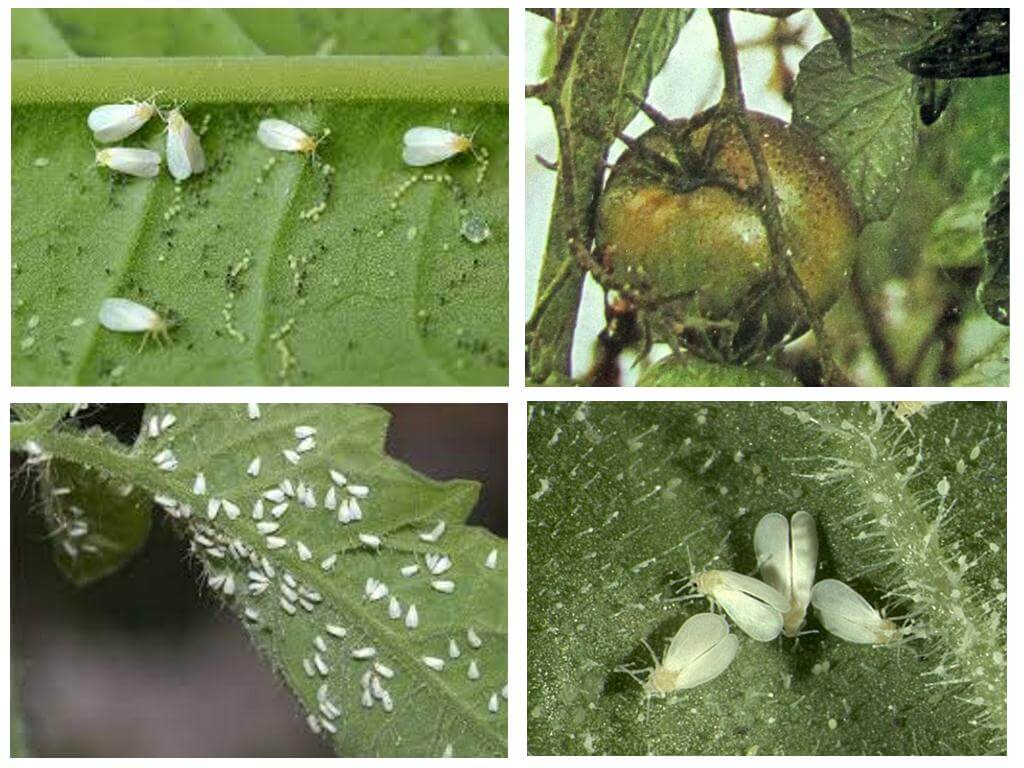
The following factors indicate the presence of a pest:
- sticky and shiny stems of plants and leaves;
- cloudy white spot coating on the surface of the foliage;
- twisted leaves with signs of wilting;
- the appearance of chlorosis and a specific yellow mosaic on their plate;
- the presence of soot fungus;
- the formation of eggs and waxes on the inner surface of the plant plate;
- necrosis of the fruit.
Touching such a plant is accompanied by the appearance of a flock of white small flies that instantly fly to another bush. All these signs are conclusive evidence that the fight against whiteflies in the greenhouse should be started immediately. To dispel all doubts, one can compare the insect with the representatives of this family depicted in the photo.
Pest Life Cycle
Aleirodida or whitefly belongs to the family of flying small, winged insects. Outwardly, it resembles mole or a small moth with long white wings. The body length of the pest is about 2 mm. In nature, there are about two hundred varieties of aleirodides. It lives in a moderately warm climate. In the central part of Russia, several species of gluttonous whiteflies are found. Pests can infect woody, shrubby and herbaceous plants. In total there are about 300 varieties. Whitefly in the greenhouse leads to the death and spoilage of tomatoes, peppers, cucumbers, gourds, lettuce, and cabbage on the open ground and even indoor flowers.
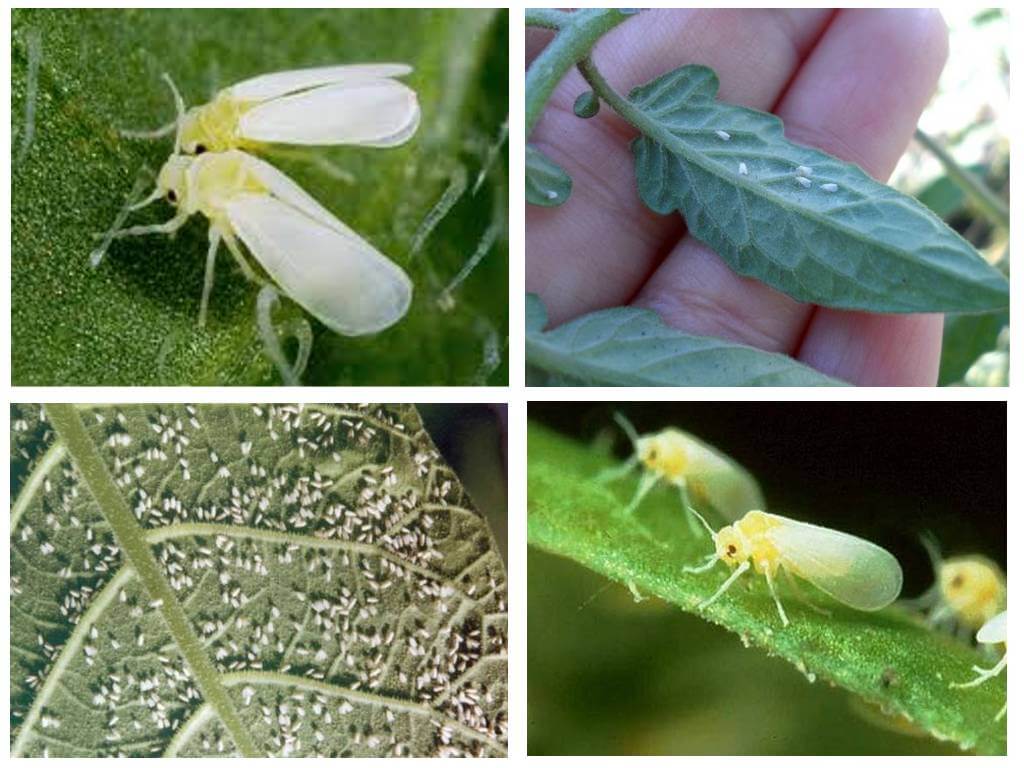
Adult individuals appear in the greenhouses and settle on the inside of the leaves of the plants. Here they lay small oblong eggs. Fertile females are able to put them down to two hundred in one cycle. After a week, a huge number of children appear, in appearance resembling yellowish-transparent scales. In its development, the insect goes through several stages:
- Larva stage. Initially, they are almost invisible, you can find them with great difficulty. Worms move in search of a comfortable place for several hours after birth. Finding it, they become motionless, the process of intense feeding larvae. This time is the most favorable in order to destroy the whitefly in the greenhouse. Two weeks later, she stops eating, her body is enveloped in a dense wax coating, making the larva invulnerable.
- Nymph or doll. In this state, insects are resistant to any drugs. They continue to eat plant juice, after 10-16 days they turn into adults.
- Adult. For some time, adults remain on the leaves. With a small number, whiteflies do not fly away from a favorite bush.
The full life cycle of an insect is determined by environmental conditions. The higher the temperature, the faster the adult is formed.
Important!
-7-11.5 ° C is the death temperature of all phases of the harmful insect.
The greenhouse whitefly can grow more than fifteen generations in one year. Throughout the entire period of their life, pests feed on amino acids contained in the sap of plants, depriving them of their strength.
Harm done
The presence of whiteflies on plants brings them irreparable harm. A large amount of juice drunk by parasites deprives green spaces of vitality, and massive punctures of the leaf surface disrupt the process of natural photosynthesis. Sucking insects transmit infections and diseases, such as chlorosis, jaundice, curly leaf, necrosis of the fruit. Whitefly on cucumbers, tomatoes and other crops slows their growth, which affects yield.
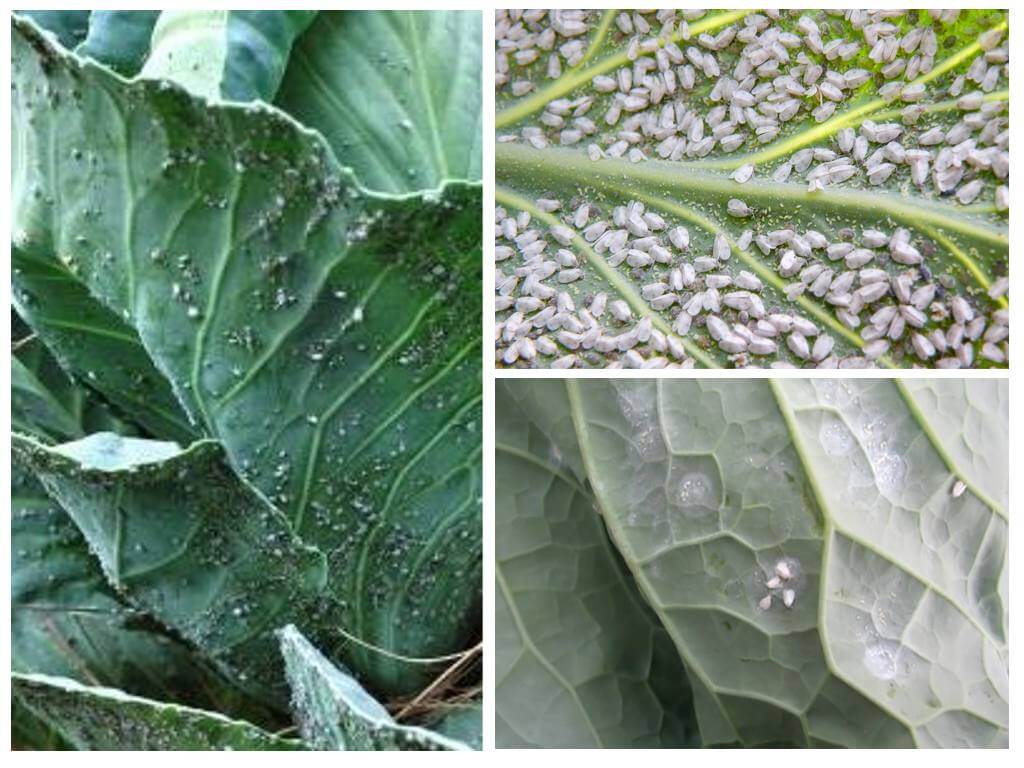
The product of the vital activity of insects is a cloudy white liquid called honey dew. It serves as a favorable environment for the propagation of pathogenic microflora. When infected, the plant is covered with a sticky dark coating, which leads to the death of green spaces. All this makes you think about how to deal with whiteflies in the greenhouse in order to save the crop.
Greenhouse Pest Management Methods
First of all, it is necessary to pay attention to preventive measures. Prevention in spring and autumn will prevent the penetration of the parasite into the greenhouse. It is possible to prevent infection of the premises if you perform such manipulations:
- Freeze new soil, add bleach to it and pour with a solution of copper sulfate;
- tightly close the doors of the greenhouse after harvesting the remains of plants and disinfecting it in the fall;
- after autumn cleaning in a polycarbonate greenhouse, it is necessary to repeat the treatment of whiteflies in spring with pesticides and disinfectants;
- inspect seedlings for greenhouse pests;
- during the entire period of plant growth, monitor the quality of the microclimate in the greenhouse.
Important!
Processing of the greenhouse in autumn and spring is carried out before planting.
Processing of the greenhouse in autumn and spring is carried out before planting.
These simple but effective measures will allow get rid of whiteflies on tomatoes and other cultures. If the pest nevertheless appeared, it will be necessary to solve the difficult problem of how to get rid of whiteflies in the greenhouse.
Chemical and biological methods
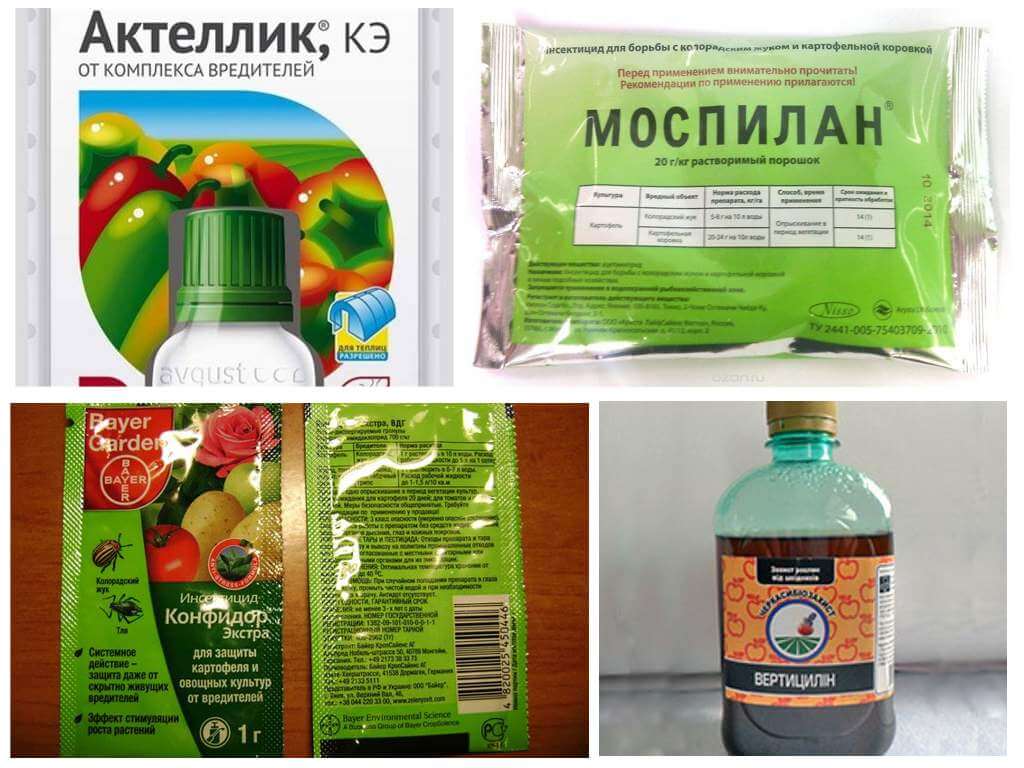
Chemicals today are the most effective means of removing whiteflies from the greenhouse. Insecticides are injected under the root of the plantations or dissolved in an appropriate amount of water, and plants and surfaces are treated. The chemicals used against whiteflies in the greenhouse should be used in accordance with the recommendations set out in the instructions.
You can get rid of parasites with the help of such drugs:
- Confidor. Process the greenhouse once a season.
- Mospilan and Fufanol. Solutions are used for single use.
- Pegasus and verticillin. Double use is possible.
- Actellic. An effective tool to fight whiteflies at all stages of its development.
Biological methods of controlling whiteflies in a greenhouse are distinguished by their unusualness. A unique way to remove pests is to grow parasites for them. It is necessary to purchase a test tube with enkarsia and distribute its contents in the greenhouse. Small insects will find the whitefly, lay eggs directly into the body of the larva.
Folk remedies
If the use of the above drugs is not possible, then it is recommended to use folk remedies that help to remove pests. Against whiteflies, you can use:
- bright glue traps;
- plant umbelliferous dill and ghoul in the greenhouse;
- infusion of garlic and tobacco, which must be treated with plants;
- smoke bombs.
Interesting!
Whitefly prefers yellow and blue shades. therefore midge traps must be precisely these colors.
In order to protect the plantings from the invasion of parasites for the next year, it is necessary to conduct a series of measures before the winter. There are a large number of ways how to process a greenhouse from whiteflies in the fall. Practitioners recommend a general cleaning of the premises using household chemicals. After this, the surfaces are treated with copper sulfate, bleach or a solution of manganese. Tobacco smoke, which can fumigate the premises of the greenhouse, will make the fight against whitefly the most effective.
All the above information will make it possible to detect, recognize the pest in time, take all necessary measures to destroy the pest.
